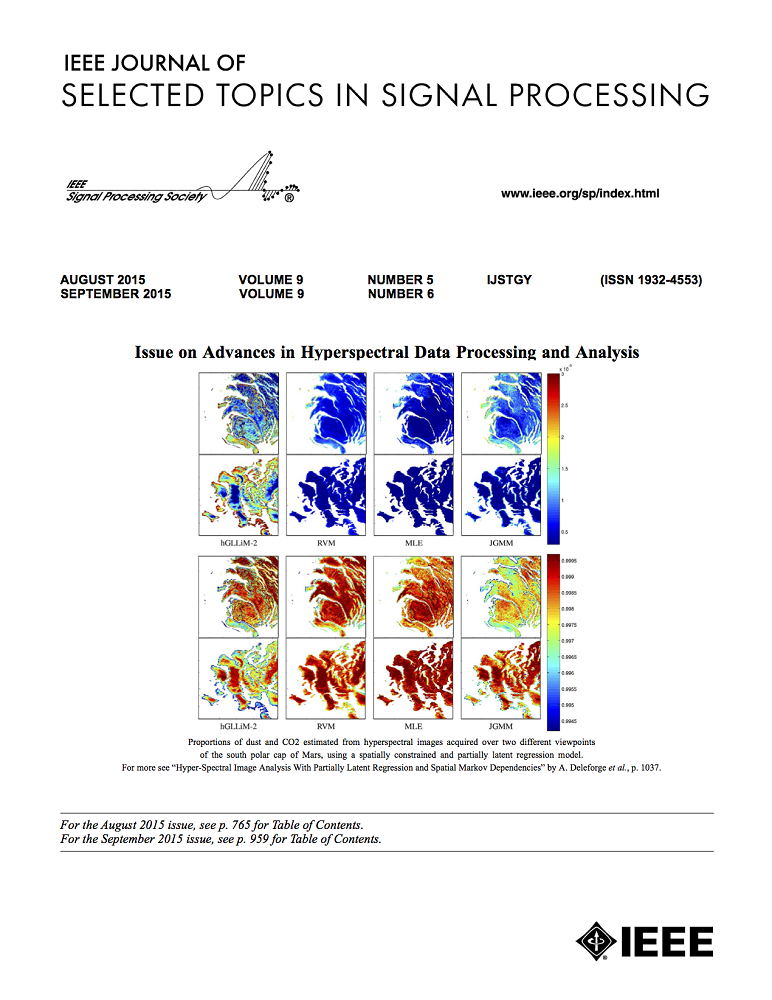预测性数字双子通道的数据增强:通过卷积 TimeGAN 学习多域相关性
IF 8.7
1区 工程技术
Q1 ENGINEERING, ELECTRICAL & ELECTRONIC
IEEE Journal of Selected Topics in Signal Processing
Pub Date : 2024-01-31
DOI:10.1109/JSTSP.2024.3358980
引用次数: 0
摘要
为了在复杂的移动网络中实现先进的系统设计,通过数据驱动方法构建了预测性数字孪生(DT)信道,以提供高精度的信道预测。然而,缺乏足够的时间序列数据集会导致过拟合,从而降低 DT 信道的预测精度。本文研究了如何通过数据增强来构建预测性 DT 信道,同时增强其解决信道老化问题的能力。特征空间的学习需要保证合成数据集与原始数据集具有相同的信道系数分布和时频域相关性。因此,我们提出了卷积时间序列生成对抗网络(TimeGAN)来捕捉原始数据集的内在特征,然后生成合成样本。具体来说,嵌入网络和恢复网络通过降低原始信道数据集的维度提供了一个潜在空间,而对抗学习则通过序列生成器和序列判别器在这个空间中运行。仿真结果表明,合成数据集与原始数据集具有相同的信道系数分布和多域相关性。此外,所提出的数据增强方案有效提高了动态无线环境中 DT 信道的预测精度,从而提高了老化信道中可实现的频谱效率。本文章由计算机程序翻译,如有差异,请以英文原文为准。
Data Augmentation for Predictive Digital Twin Channel: Learning Multi-Domain Correlations by Convolutional TimeGAN
In order to realize advanced system design for the sophisticated mobile networks, predictive digital twin (DT) channel is constructed via data-driven approaches to provide high-accuracy channel prediction. However, lacking sufficient time-series datasets leads to overfitting, which degrades the prediction accuracy of the DT channel. In this article, data augmentation is investigated for constructing the predictive DT channel, while enhancing its capability of tackling channel aging problem. The feature space needs to be learned by guaranteeing that the synthetic datasets have the same channel coefficient distribution and time-frequency-space domain correlations as the original ones. Therefore, convolutional time-series generative adversarial network (TimeGAN) is proposed to capture the intrinsic features of the original datasets and then generate synthetic samples. Specifically, the embedding network and recovery network provide a latent space by reducing the dimensions of the original channel datasets, while adversarial learning operates in this space via sequence generator and sequence discriminator. Simulation results demonstrate that the synthetic dataset has the same channel coefficient distribution and multi-domain correlations as the original one. Moreover, the proposed data augmentation scheme effectively improves the prediction accuracy of the DT channel in a dynamic wireless environment, thereby increasing the achievable spectral efficiency in an aging channel.
求助全文
通过发布文献求助,成功后即可免费获取论文全文。
去求助
来源期刊

IEEE Journal of Selected Topics in Signal Processing
工程技术-工程:电子与电气
CiteScore
19.00
自引率
1.30%
发文量
135
审稿时长
3 months
期刊介绍:
The IEEE Journal of Selected Topics in Signal Processing (JSTSP) focuses on the Field of Interest of the IEEE Signal Processing Society, which encompasses the theory and application of various signal processing techniques. These techniques include filtering, coding, transmitting, estimating, detecting, analyzing, recognizing, synthesizing, recording, and reproducing signals using digital or analog devices. The term "signal" covers a wide range of data types, including audio, video, speech, image, communication, geophysical, sonar, radar, medical, musical, and others.
The journal format allows for in-depth exploration of signal processing topics, enabling the Society to cover both established and emerging areas. This includes interdisciplinary fields such as biomedical engineering and language processing, as well as areas not traditionally associated with engineering.
 求助内容:
求助内容: 应助结果提醒方式:
应助结果提醒方式:


